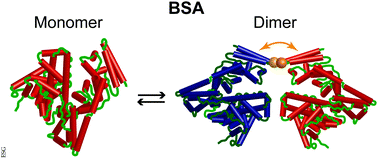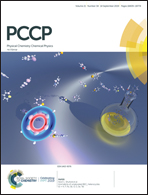Localised contacts lead to nanosecond hinge motions in dimeric bovine serum albumin
Abstract
Domain motions in proteins are crucial for biological function. In the present manuscript, we present a neutron spin-echo spectroscopy (NSE) study of native bovine serum albumin (BSA) in solution. NSE allows to probe both global and internal dynamics of the BSA monomer and dimer equilibrium that is formed in solution. Using a model independent approach, we were able to identify an internal dynamic process in BSA that is visible in addition to global rigid-body diffusion of the BSA monomer and dimer mixture. The observed internal protein motion is characterised by a relaxation time of 43 ns. The overdamped Brownian oscillator was considered as an alternative analytical theory that was able to describe the internal process as first-order approximation. More detailed information on the physical nature of the internal protein motion was extracted from the q-dependent internal diffusion coefficients ΔDeff(q) that were detected by NSE in addition to global rigid-body translational and rotational diffusion. The ΔDeff(q) were interpreted using normal mode analysis based on the available crystal structures of the BSA monomer and dimer as structural test models. Normal mode analysis demonstrates that the observed internal dynamic process can be attributed to bending motion of the BSA dimer. The native BSA monomer does not show any internal dynamics on the time- and length-scales probed by NSE. An intermolecular disulphide bridge or a direct structural contact between the BSA monomers forms a localised link acting as a molecular hinge in the BSA dimer. The effect of that hinge on the observed motion of BSA in the used dimeric structural model is discussed in terms of normal modes in a molecular picture.

- This article is part of the themed collection: 2019 PCCP HOT Articles


 Please wait while we load your content...
Please wait while we load your content...